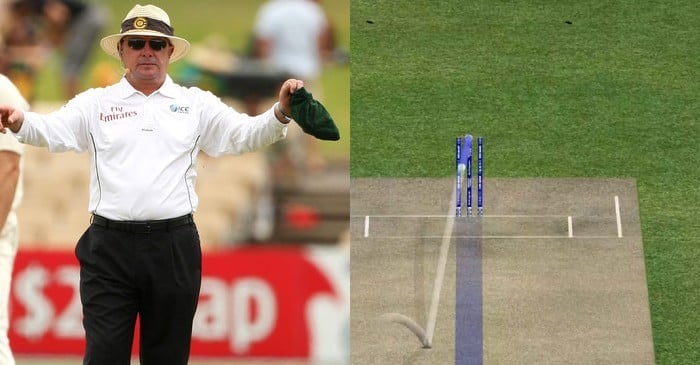Former British cricketer-turned-umpire Ian Gould retired last year from international cricket. The final international match in which he stood was India versus Sri Lanka ODI in the 2019 World Cup. A few days ago, Gould in his autobiography, ‘Gunner: My Life in Cricket’ revealed that New Zealand’s umpire Chris Gaffaney was the first person who suspected the infamous ball-tampering scandal of the Australia cricket team in 2018.
Now, the English umpire has dropped his opinion on one cricket rule which should be removed from DRS technology. For those who aren’t yet aware, DRS is a technology-based system used in cricket to assist the match officials with their decision-making. On-field umpires may choose to consult with the third umpire, and players may request the third umpire to review the on-field umpires’ decision.
While talking to Tuffers and Vaughan Cricket Show at BBC Radio 5 Live, Gould said the umpire’s call, which relates to an lbw decision, should not be used if DRS is available worldwide. As per the DRS, which was introduced into Test cricket in 2009 and now used in all formats, if a player reviews an lbw decision and less than half the ball is hitting the stumps, then in that case, the on-field umpire’s call stands.
“You have to have DRS worldwide, and if you do that, I’d take the umpire’s call out,” said Gould.
Gould stated that it is not fair to have 37 cameras on every other decision but only 10 on the other.
“My argument is you can’t go to one place and have 37 cameras on every decision you make, then you go somewhere else, and there’s only 10. It’s unfair. It doesn’t equal the game up” added the 62-year-old.
The reason why Gould focused on worldwide availability is that in many bilateral series the DRS technology is not used mainly because not many boards can afford it. When Ireland took on the challenge of Pakistan, the DRS wasn’t used in the Test as Cricket Ireland could not afford the technology.
Gould also revealed that most umpires were not a fan of this technology when it first came around.
“If a batsman came forward and was hit on the pad, then it was not out. Then all of a sudden, you were seeing these things in front of you. That was the hard bit. When I first joined, a lot of senior umpires felt as though they were being shown up,” Gould added further.
Gould stood as an umpire in 74 Test matches, 140 One-Day Internationals (ODIs), and 37 T20 Internationals (T20Is).
